Samsung TV vs Sony TV: which is the best TV brand?
We put the Samsung TV and Sony TV ranges head-to-head
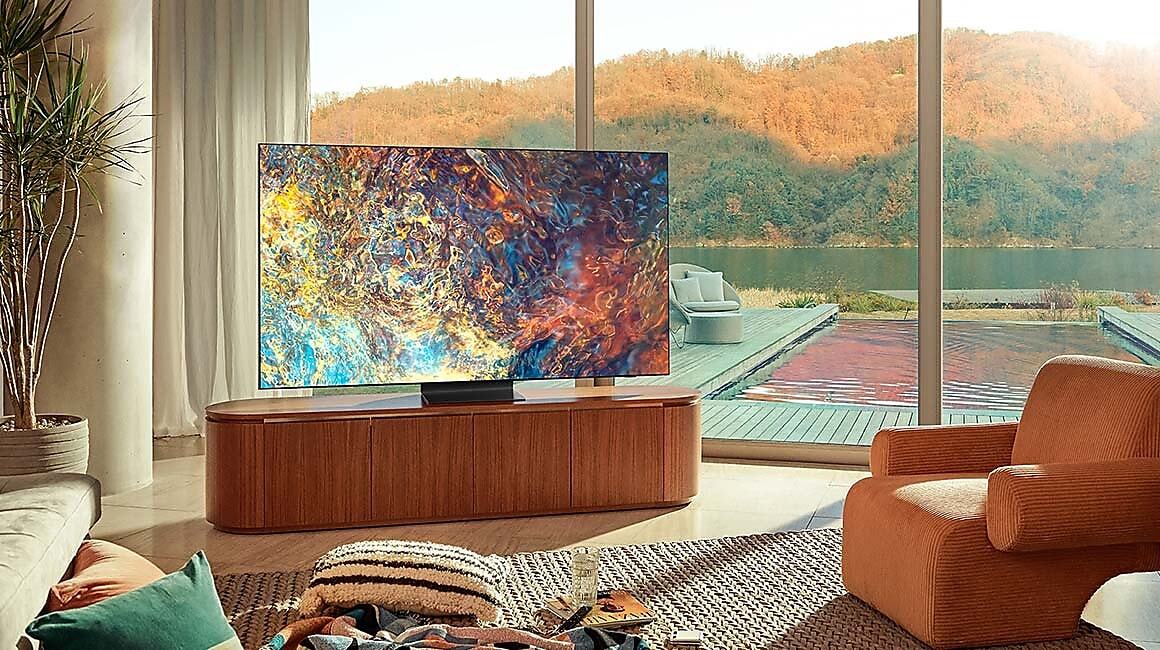
Do you need a Samsung TV vs Sony TV? If you're looking for a new TV, then you're probably weighing up the options between these two brands. But how do you decide which one is right for you?
Both Samsung and Sony make excellent TVs. Each of these brands feature in our best TVs guide, as well as in our pick of the best gaming TVs and best 4K TVs you can buy today.
This means most people will be happy with a TV from either brand. But although both Samsung and Sony make some of the top TVs on the market right now, there are some differences between their ranges.
These differences include the premium technologies they're pushing, like OLED vs QLED, how their TV sets generate sound, what format support you'll find, their processing strengths more.
For a more in-depth look at both TV ranges, check out our full best Samsung TV guide and best Sony TV guide. Otherwise, read on for our in-depth comparison of Samsung TVs vs Sony TVs, to make sure you know what you're getting – or forfeiting – by choosing one over the other.
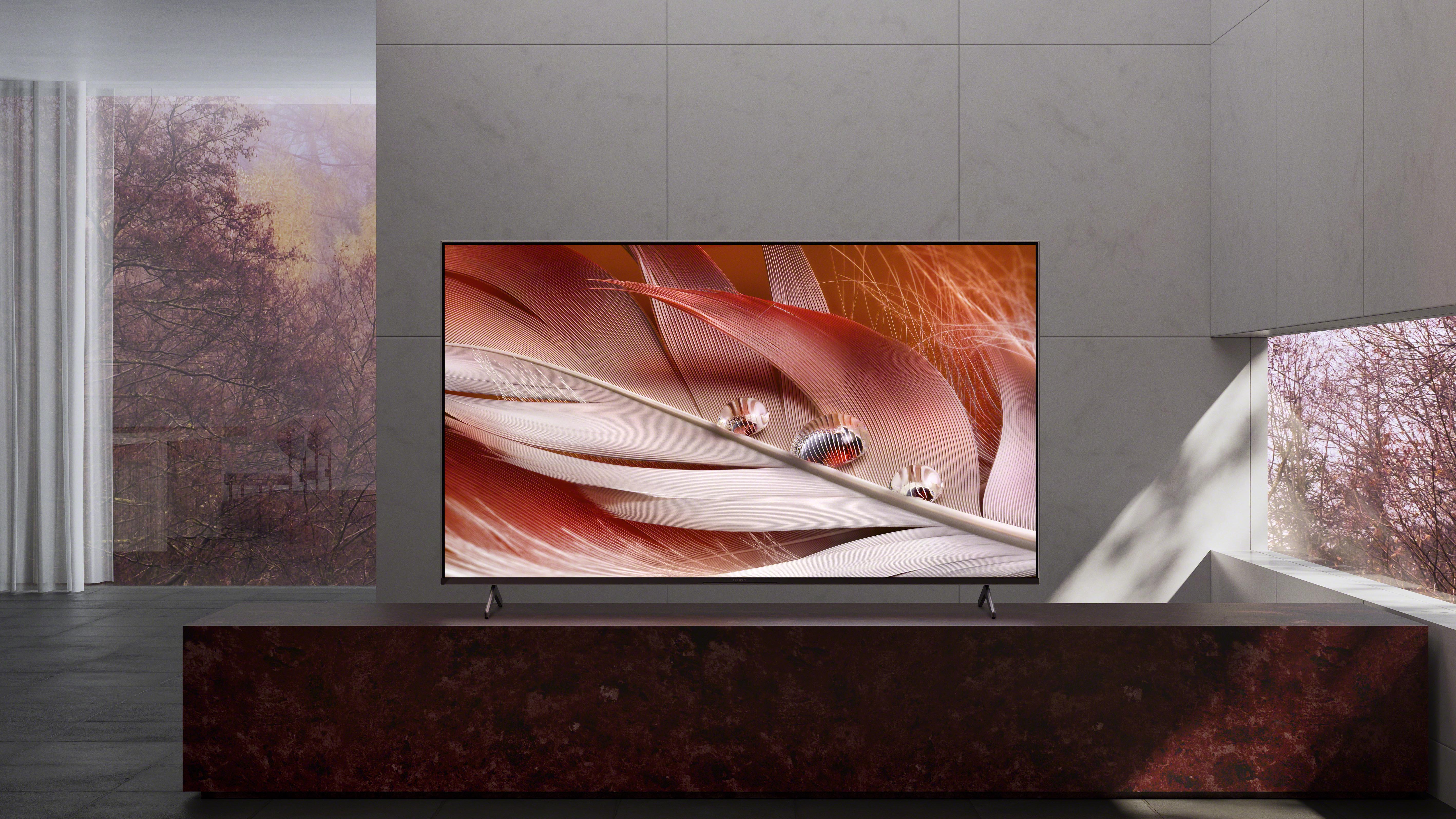
Samsung TV vs Sony TV: overview
Let's begin by looking at the brands. Samsung is a South Korean manufacturer, and by far the largest maker of televisions worldwide, followed next by LG and TCL. However, Sony isn't far behind – and the Japanese manufacturer is still a force to contend with.
Sony and Samsung cater to budgets of all sizes, and manufacture everything from 32-inch TVs through to huge 75-inch screens – there are even a few 85-inch models now available from both brands, too.
Get daily insight, inspiration and deals in your inbox
Sign up for breaking news, reviews, opinion, top tech deals, and more.
They sell televisions globally, with presences in both the UK and US – unlike Panasonic or Philips, brands which don’t have licenses in North America.
Both brands make a lot of consumer products outside of televisions, too. Read our PS5 review to find out about Sony's next-gen gaming console, or our PSVR review to learn more about Sony's foray into virtual reality.
Sony and Samsung are also fighting over territory in the highly competitive smartphone market: both manufacture Android phones. We won’t be comparing their handsets in this guide, but read our separate guides for the best Sony phones or best Samsung phones if you're interested.
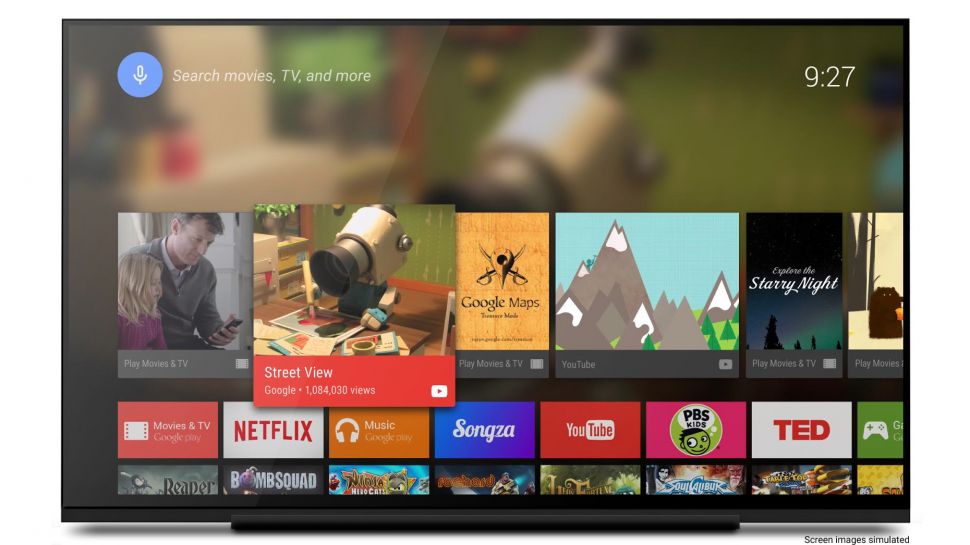
Samsung TV vs Sony TV: features
Both brands use different operating systems to run their smart TVs.
Samsung goes with the Tizen OS smart platform for the majority of its new TVs. We've found Tizen to be fast to navigate and generally uncluttered. There's a constantly refreshing 'recent' box that enables you to keep track of your most-used apps, too.
Overall, Tizen brings you a pretty competent experience, though the universal search function isn't as accomplished as LG's webOS platform.
Sony, on the other hand, uses Android TV, which offers more content and menu panes than its competitor. It's a bit more cluttered, but that also means there's more at your fingertips to choose from.
For UK viewers, Sony's Android TV has rather cleverly layered a YouView program guide platform on top, deftly addressing one of Android TV’s big weaknesses – catch-up TV provision. This YouView app ensures that all the main catch-up services are provided, and accessible via a roll-back 7-day EPG.
Read our best smart TV platform guide to find out more about the key differences between Tizen and Android TV.
What about voice assistants? Many Sony TVs come with Google Assistant integration. This makes sense given Android TV is a Google-developed platform.
However, Sony added an Amazon Alexa Music, Cameras and TV Control app to its more recent TVs, and some mid-range models from previous years. This will let you control third-party smart home products and speakers through some basic Alexa capability – like the Amazon Echo or Ring security cameras – and use Alexa voice commands for the TV's power and volume functions.
Samsung's Bixby voice assistant can be found on mid-range sets and above, though it's known to lag behind Alexa or Google Assistant in terms of smarts or voice recognition. However, it's more than enough for the minimal TV controls you're likely to be using Bixby for – and you can always link up your television with an Alexa speaker if you really want to.
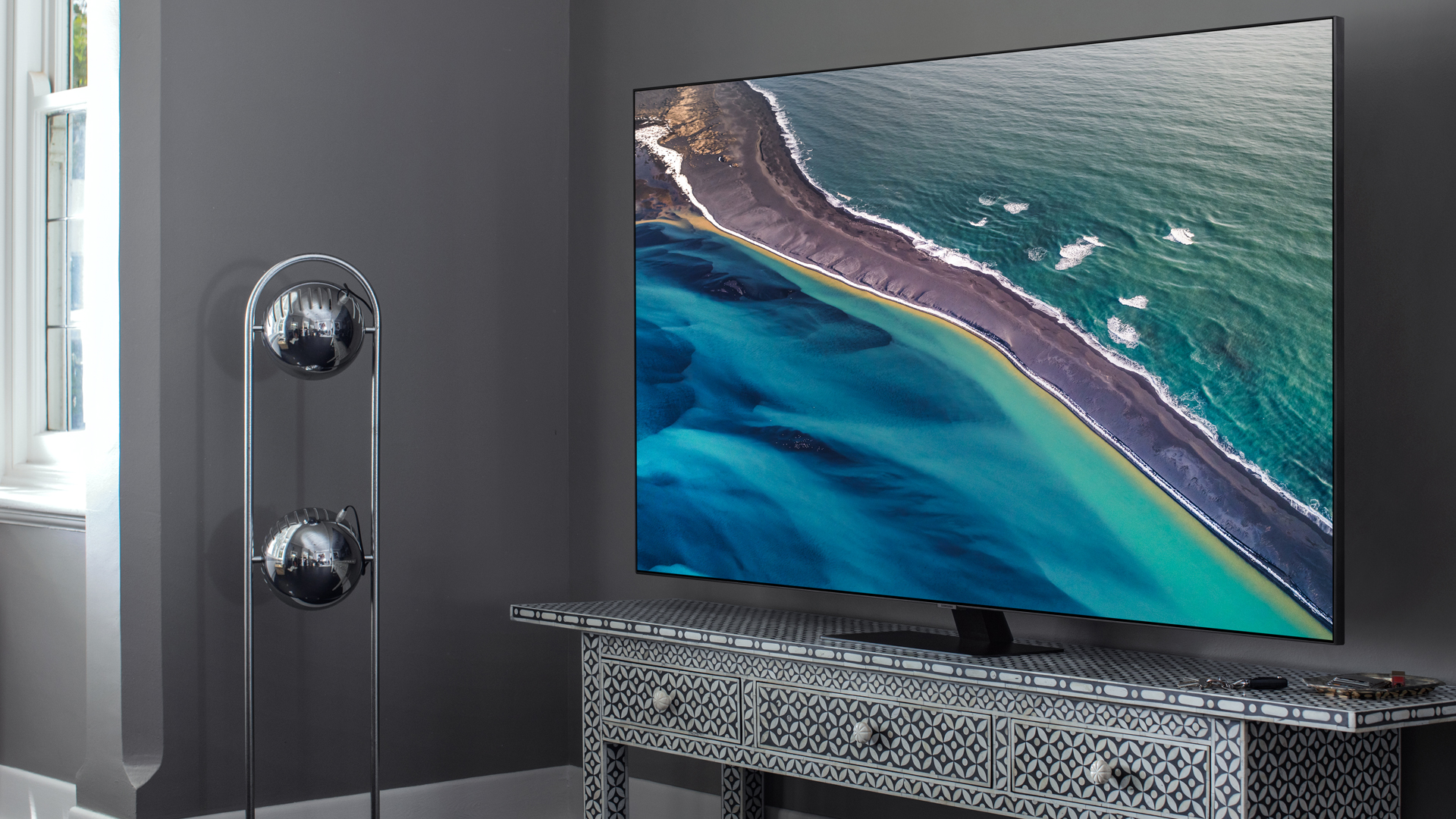
Samsung TV vs Sony TV: panel technologies
Today’s premium television market is divided into two panel technologies: OLED and QLED (basically an LED-LCD screen with quantum dots).
QLED is mostly (although not exclusively) used in Samsung TVs and the brand has been pushing its QLED screens for years now, which are known for their bright 1,000-2,000 nit screens, enabling vivid HDR scenes and high impact TV images.
They're certainly a lot brighter than the OLED (organic LED) displays used by Sony for its high-end sets, which struggle to get brighter than around 800 nits – though it's not quite a fair comparison.
While OLED screens tend to be dimmer, they achieve a much more natural color contrast, given the organic film used in production. OLED displays are also self-emissive, meaning that each individual pixel emits its own light, allowing for incredibly precise control of light and darkness across the screen. Blacks really look like blacks, and while overall brightness suffers, the bright sections also don't bleed into surrounding areas of the screen (as is often the case with LED).
There’s often talk of ‘burn in’ images on OLED screens, but much of this is anecdotal, and you’d probably need to be working the set very hard for this to become a problem.
We’ve gone into this debate in more detail in our QLED vs OLED guide, though for now it’ll be enough to say that OLED is generally suited to high-quality video formats in dark viewing environments, while Samsung’s sets lag on contrast (comparatively) but make up for it with a bright and impactful display. Keep in mind though, both are highly impressive premium panel technologies, and most people will be very happy with either.

Samsung TV vs Sony TV: picture quality
If you're buying a mid-range television up to one of the top-of-the-line sets, it will likely come with support for high dynamic range (HDR), but you may not realize that HDR comes in several different forms.
There's a base HDR10 format supported on every HDR TV – which has a wider color gamut and improved contrast compared to regular SDR television. Most TV content these days is still in SDR, but more movies, shows and programmes are made in HDR every year.
But beyond that are two HDR formats that add 'dynamic metadata' to improve TV images by altering the TV's picture settings depending on the scene you're watching and the kinds of images onscreen.
The first was Dolby Vision, which is backed by Sony as well as LG, and found in TVs across Vizeo, TCL, and Hisense among others. Then there's HDR10+, which is backed by Samsung and Panasonic – though the latter has now pivoted to offer both formats on its mid-range and premium TVs.
The quick version? Samsung TVs have HDR10+, and Sony TVs have Dolby Vision.
Dolby Vision is really the more advanced format, with 12-bit color gamut instead of the 10-bit HDR10+, and is also more commonly found (both the Google Chromecast with Google TV and Apple TV 4K take advantage of Dolby Vision).
Admittedly, preferred HDR format is only really a concern at the higher end of the price range, but those spending big should think carefully about which services they’re likely to want HDR content on.
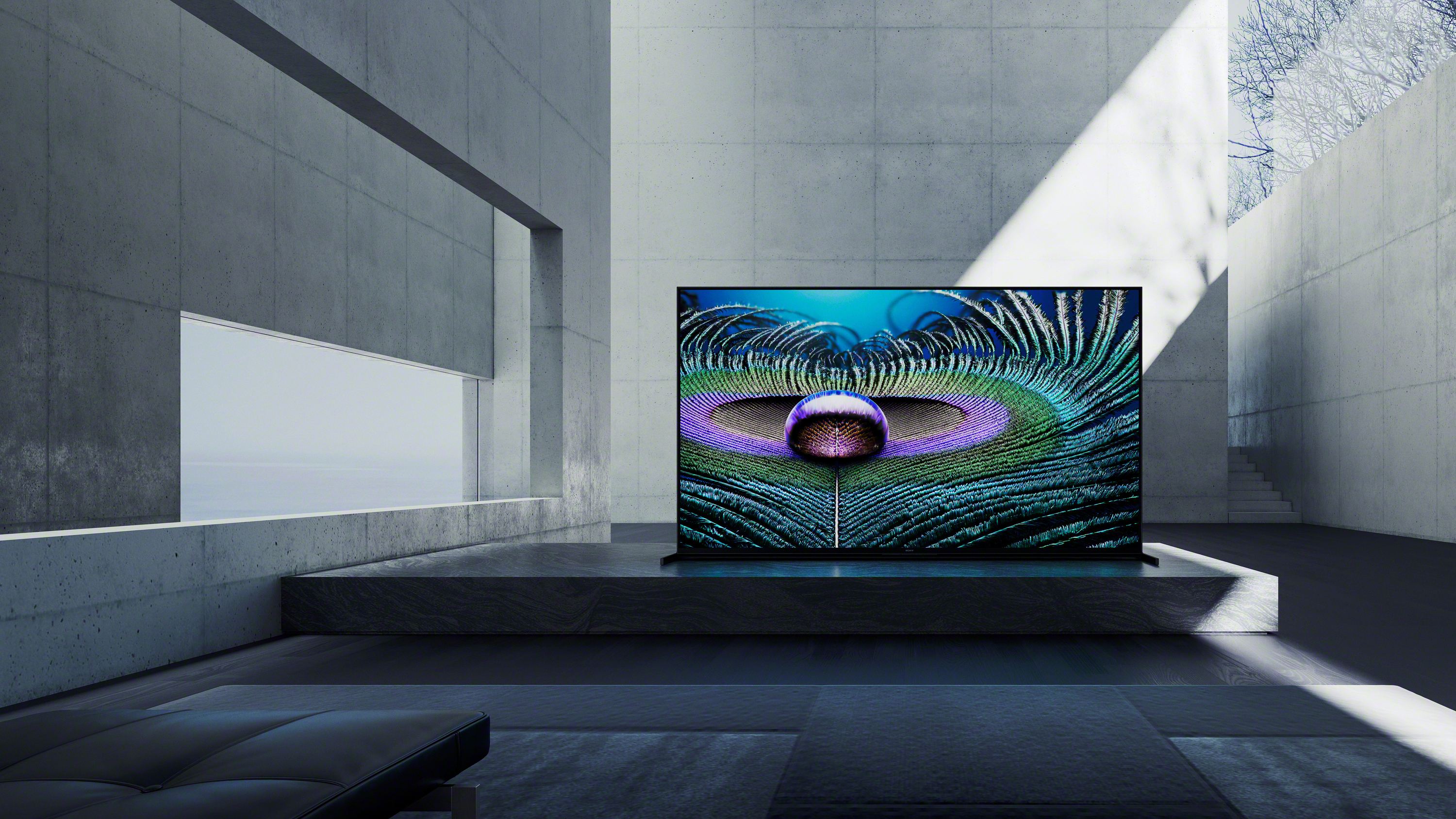
Samsung TV vs Sony TV: audio performance
Sony and Samsung are at loggerheads over the best solutions for built-in audio.
Sony has been shipping sets with its Acoustic Surface Audio technology for a few years now, which vibrates the TV panel itself to emit sound. It sounds like a smart solution on the surface, though glass isn't usually the best material for channeling audio – and the sound can be somewhat imprecise. Nonetheless, you'll find it in most of Sony's premium television lineup these days.
Samsung’s rival TV sound system is OTS (Object Tracking Sound), which, like Acoustic Surface Audio, adds directionality to onscreen movement. It uses software allied to tiny conventional drivers to achieve the effect.
These features are very much at the premium end, though – largely for 8K QLEDs for Samsung and 4K OLEDs for Sony – and there's far less difference between the TV brands' average 20W speakers at the mid-range.
For more, read our Sony Acoustic Surface Audio vs Samsung OTS guide.
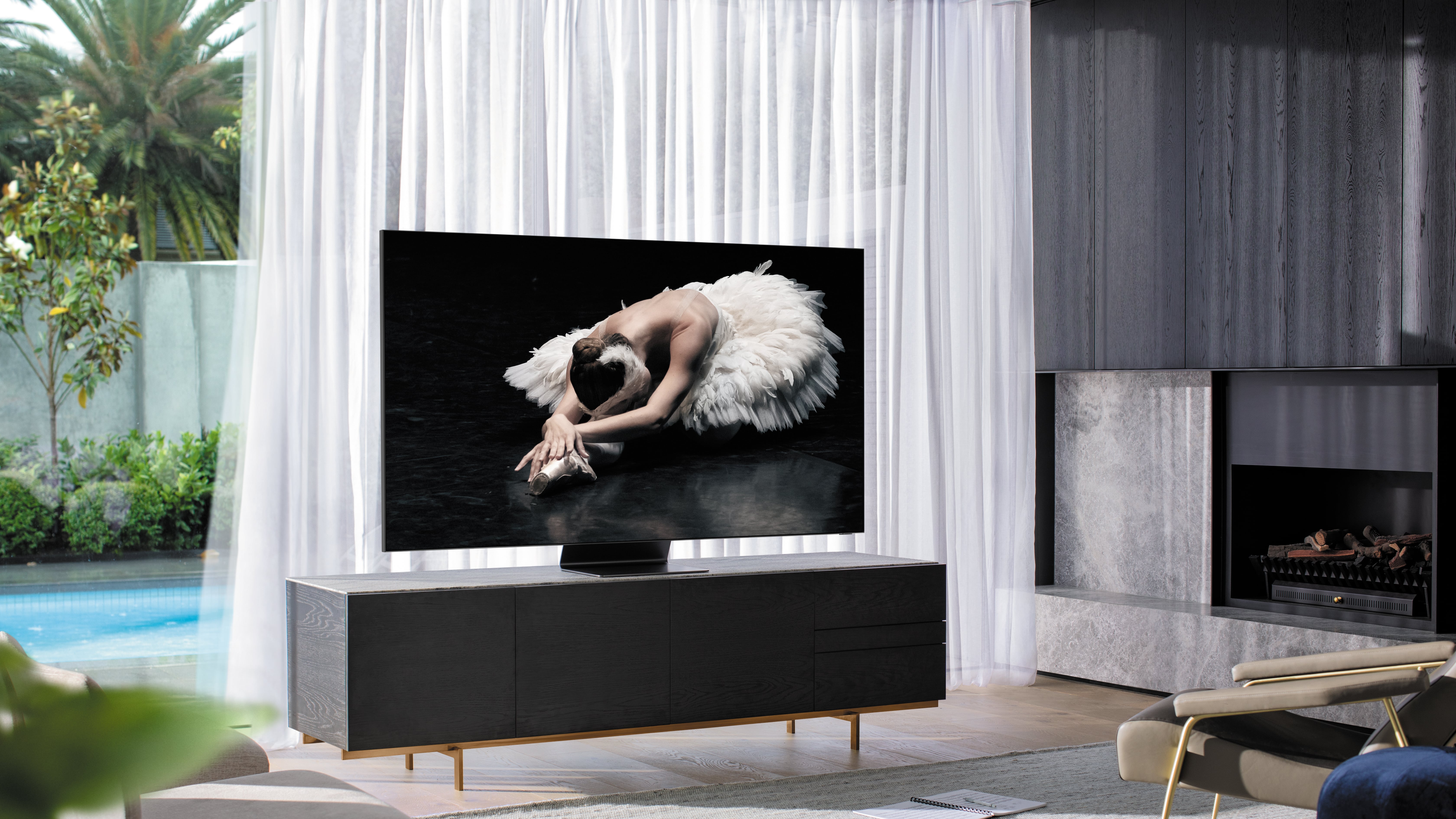
Verdict
Both Sony and Samsung are capable mainstream TV makers, and you're unlikely to get screwed over by a purchase from one or the other.
Both brands have unveiled many promising new features and devices in 2022 so far. Like the truly next-generation Sony A95K QD-OLED TV, the first QD-OLED unveiled by a major manufacturer, beating other giants like Samsung and LG to the punch.
Whereas Samsung's 2022 Neo QLED TVs with mini-LED are on their way, Samsung's smaller Micro LED TVs, and the long-rumored Samsung QD-OLED that will hit the market sometime this year.
Most of our complaints for Sony and Samsung's premiums sets gear around format support – the picture quality is generally brilliant either way. And if you're committed to Dolby Vision or HDR10+ as an HDR format, that may well make your decision for you.
Samsung's QLED sets will go big on brightness, and if you're more of a daytime viewer than a huddle-in-the-dark cinephile, the brighter displays may be more what you're after. Otherwise Sony's OLEDs will offer a crisp picture with incredible contrast more suited to your late night movie sessions.
Samsung sets will also generally be a bit cheaper for what they offer – hence how Samsung managed to overtake Sony despite being something of an upstart in the TV market not too long ago. OLEDs especially will cost more than an equivalent QLED.
If you're not looking for specific features, you can't go wrong with either. But do make sure you look out for key differences in the format support, smart TV platform and audio departments, that's where one might tip the scales for you when you're looking for a new TV this year.
Henry is a freelance technology journalist, and former News & Features Editor for TechRadar, where he specialized in home entertainment gadgets such as TVs, projectors, soundbars, and smart speakers. Other bylines include Edge, T3, iMore, GamesRadar, NBC News, Healthline, and The Times.
